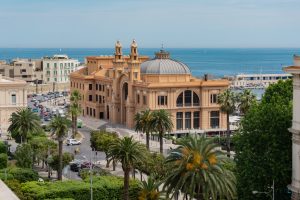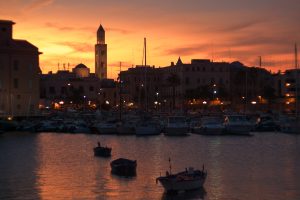Bari, a charming port city located in the Puglia region of southern Italy, is known for its rich history, cultural landmarks, and mouth-watering cuisine. However, its weather is equally fascinating, and it’s worth exploring this aspect of the city. In this article, we’ll take a closer look at the climate of Bari and what makes it unique.
Bari is situated on the Adriatic coast and experiences a Mediterranean climate. Summers are hot and dry, while winters are mild and wet. The city enjoys an average of 300 sunny days per year, making it an ideal destination for sun-seekers.
Summer in Bari lasts from June to September, and temperatures can soar up to 30°C (86°F) or higher. The heat is usually accompanied by low humidity, creating a comfortable atmosphere. The sea breeze helps to cool down the city, and many locals head to the beach to escape the heat. The sea temperature in summer is around 25°C (77°F), making it perfect for swimming and water sports.
Autumn in Bari, which lasts from October to November, is mild and pleasant. Temperatures range from 18°C (64°F) to 25°C (77°F), and rainfall is scarce. The sea temperature is still warm, and beachgoers can enjoy the last few weeks of the season.
Winter in Bari, from December to February, is mild and rainy. Temperatures rarely drop below 10°C (50°F), and the sea temperature remains relatively warm. However, the city experiences occasional storms, and visitors should be prepared for strong winds and heavy rainfall. Winter is the least busy season in Bari, and visitors can enjoy the city’s attractions without the crowds.
Spring in Bari, from March to May, is pleasant and mild. The temperatures start to rise, and the city comes alive with colorful flowers and blossoms. Rainfall is more frequent in spring, but it usually doesn’t last long. The sea temperature starts to warm up, and beach activities resume.
One fascinating aspect of Bari’s weather is the strong wind called “tramontana.” Tramontana is a northerly wind that blows from the Alps and can reach speeds of up to 100 km/h (62 mph). It is most common in winter and early spring and can cause disruption to transport and outdoor activities. However, locals have adapted to this wind, and many outdoor markets and events continue despite its presence.
Another interesting weather phenomenon in Bari is the “red sky” in the morning. This occurs when the rising sun’s rays reflect off the Adriatic Sea and create a red glow on the horizon. The locals believe that a red sky in the morning is a sign of good weather for the day, and many fishermen use it as an indicator for their daily catch.
In conclusion, Bari’s weather is as fascinating as its culture and history. Visitors can enjoy sunny beaches, mild temperatures, colorful flowers, and occasional winds and rains throughout the year. Whether you’re a sun-seeker or a culture buff, Bari has something for everyone. Don’t forget to check the weather forecast before your trip and pack accordingly. Bon voyage!


